Our basic guidelines for sheet metal fabrication include important design considerations to help improve part manufacturability, enhance cosmetic appearance, and reduce overall production time.
Size
Maximum Dimensions
| SIZE | 1,016mm x 1,219.2mm |
|---|---|
| LENGTH | 1.219m |
Minimum Dimensions
| FLAT PART | 12.7mm x 12.7mm |
|---|---|
| FORMED PART | 38.1mm x 38.1mm |
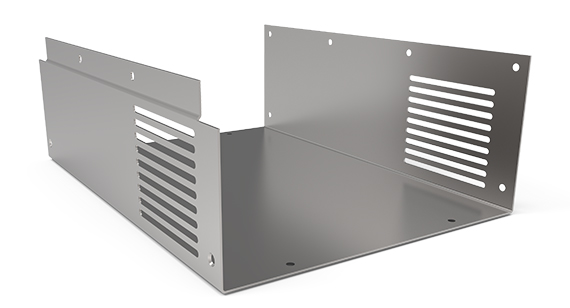
Tolerances
Single Surface
| BENDS | +/- 1 degree |
|---|---|
| OFFSETS | +/- 0.304mm |
| HOLE DIAMETERS | +/- 0.127mm |
| EDGE TO EDGE/HOLE; HOLE TO HOLE | +/- 0.127mm |
| HARDWARE TO EDGE/HOLE | +/- 0.254mm |
| HARDWARE TO HARDWARE | +/- 0.381mm |
| BEND TO EDGE | +/- 0.254mm |
| BEND TO HOLE/HARDWARE/BEND | +/- 0.381mm |
Multiple Surfaces
| FEATURES SEPARATED BY TWO OR MORE BENDS | +/- 0.762mm |
|---|
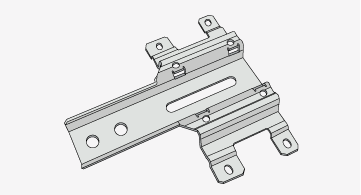
Tolerances vary on depending on part feature such as bends, offsets, holes, and inserted hardware.
Materials
- Aluminum
- Brass
- Copper
- Stainless Steel
- Steel: CR Non-treated
- Steel: CR Galvanneal and CR Galvanized
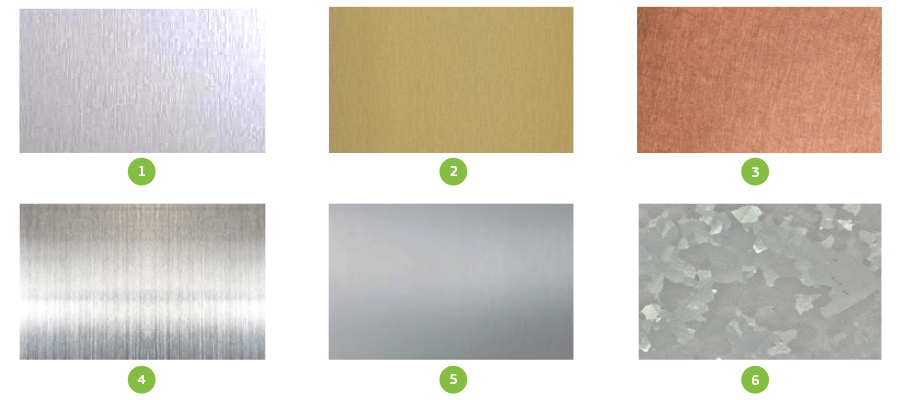
Material Thickness
| MATERIAL | THICKNESS RANGE |
|---|---|
| Aluminum 5052-H32 | 0.025 in. – 0.125 in. (0.635mm – 3.175mm) |
| Aluminum 6061-T6 | 0.025 in. – 0.125 in. (0.635mm – 3.175mm) |
| Brass CDA260 | 0.025 in. – 0.125 in. (0.635mm – 3.175mm) |
| Copper C101 | 0.025 in. – 0.125 in. (0.635mm – 3.175mm) |
| Copper C110 | 0.032 in. – 0.125 in. (0.812mm – 3.175mm) |
| Stainless Steel 304 | 0.024 in. – 0.119 in. (0.609mm – 3.022mm) |
| Stainless Steel 316 | 0.024 in. – 0.119 in. (0.609mm – 3.022mm) |
| Steel CR Non-treated | 0.024 in. – 0.134 in. (0.609mm – 3.403mm) |
| Steel CR Galvanneal | 0.027 in. – 0.138 in. (0.685mm – 3.505mm) |
| Steel CR Galvanized | 0.027 in. – 0.138 in. (0.685mm – 3.505mm) |
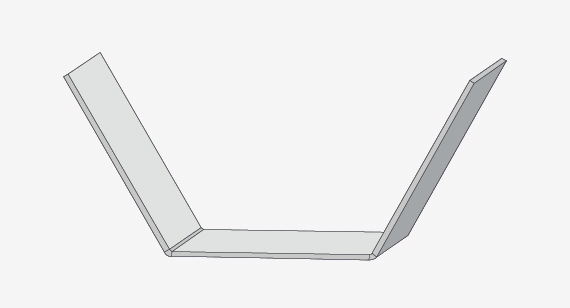
Because sheet metal parts are manufactured from a single sheet of metal, the part must maintain uniform wall thickness.
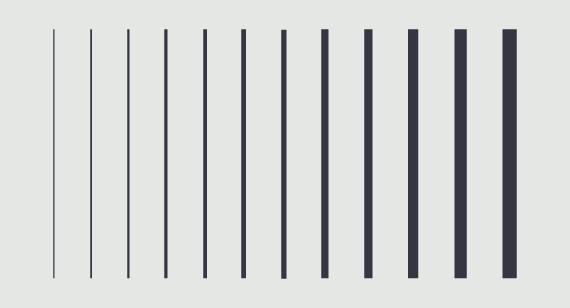
Sheet metal thickness ranges from 0.024 in. (0.609mm) to 0.138 in. (3.505mm).
Finishing
We offer standard mill, edge breaking, and orbital-sanded surface finishes along with a number of additional sheet metal finishing options:
- Seam, tack, and stitch welding
- Hardware insertion and riveting: Standard PEM sheet metal hardware
- Powder coating: A variety of powder coat paint colors available in textured and non-textured finish, including RAL colors
- Silk screening (one- and two-color): Colors mixed to closely match most Pantone numbers
- Assemblies: Up to four components (pop riveted)
- Plating: Anodize, chromate, zinc, and passivate
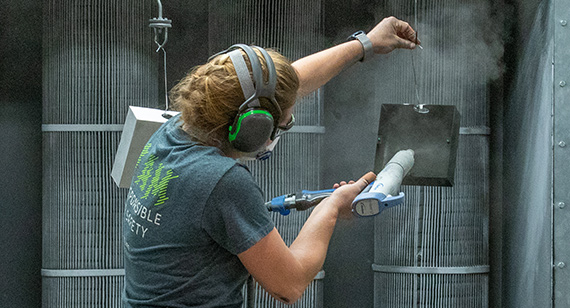
In-house powder coating is available to streamline production, and parts are powder coated in compliance with government regulations.
Bend Radius
We hold a +/- 1 degree tolerance on all bend angles. Our bend radius option is 0.030 in (0.762mm). This is an industry standard and most cost-effective. Flange length must be at least 4 times the material thickness.
It is recommended to use the same radii across all bends, and flange length must be at least 4 times the material thickness.
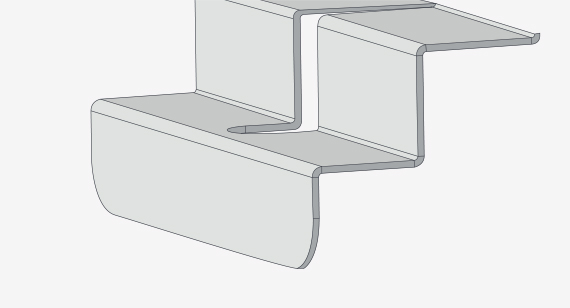
Hems
We form closed hems—folds at the end of a part to create a rounded edge. The tolerance of a hem is dependent upon the hem’s radius, material thickness, and features near the hem.
We recommend that the minimum inside diameter equals the material thickness, and the hem return length is 6 times material thickness.
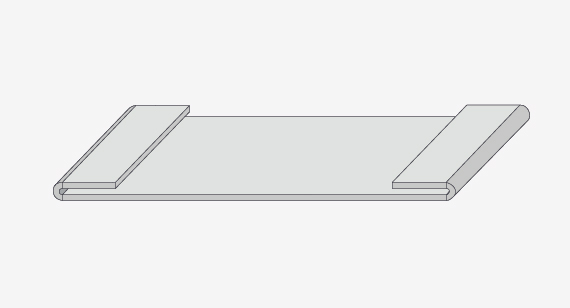
Offsets
Offsets are used to create Z-shaped profiles in sheet metal parts. We offset height tolerance at +/-0.012 in. (0.304mm) from top of sheet to top of form and recommend an offset of 0.030 in. (0.762mm).
Additional standard options include: available 0.060 in. (1.524mm), 0.093 in. (2.362mm), 0.125 in. (3.175mm), 0.187 in. (4.749mm), 0.213 in. (5.410mm), 0.250 in. (6.35mm), 0.281 in. (7.137mm), and 0.312 in. (7.924mm).
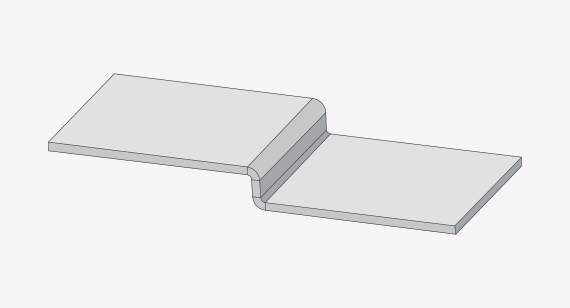
Holes and Slots
Holes and slots should be a minimum of material thickness in diameter. If a material is 0.036 in. (0.914mm) or thinner, the hole should be 0.062 in. (1.574mm) from the material edge; if the material is thicker than 0.036 in. (0.914mm), the hole should be at least 0.125 in. (3.175mm) from the material edge to avoid distortion. If hardware inserts are required, the spacing should be according to manufacturer’s specifications.
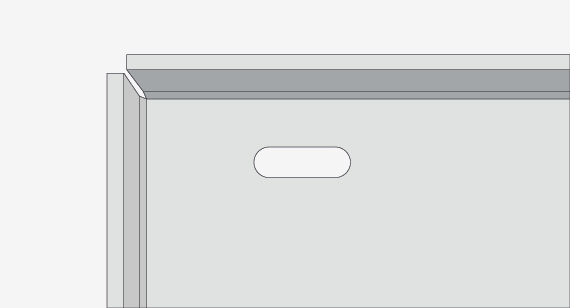
Notches and Tabs
Notches must be at least the material’s thickness or 0.04 in. (1.016mm), whichever is greater, and can be no longer than 5 times its width. Tabs must be at least 2 times the material’s thickness or 0.126 in. (3.200mm), whichever is greater, and can be no longer than 5 times its width.
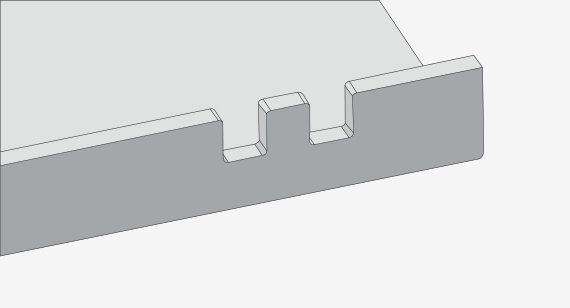
Countersinks
We offer both machined and formed countersinks—conical holes cut into a manufactured object allowing a screw, nail, or bolt to be inserted flush with the surface.
We recommend the major diameters of countersinks measure between 0.090 in. (2.286mm) and 0.500 in. (12.7mm) using one of the following standard angles: 82°, 90°, 100°, and 120°.
Tolerance for formed countersink major diameter is +/- 0.010 in. (0.254mm).
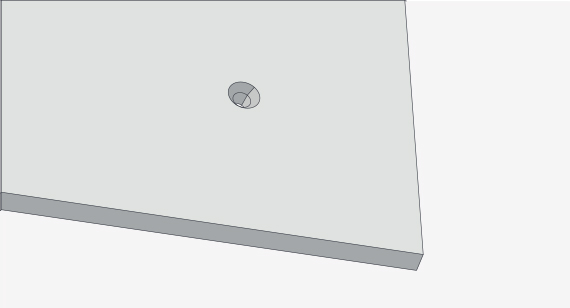
Add a Comment
You must be logged in to post a comment